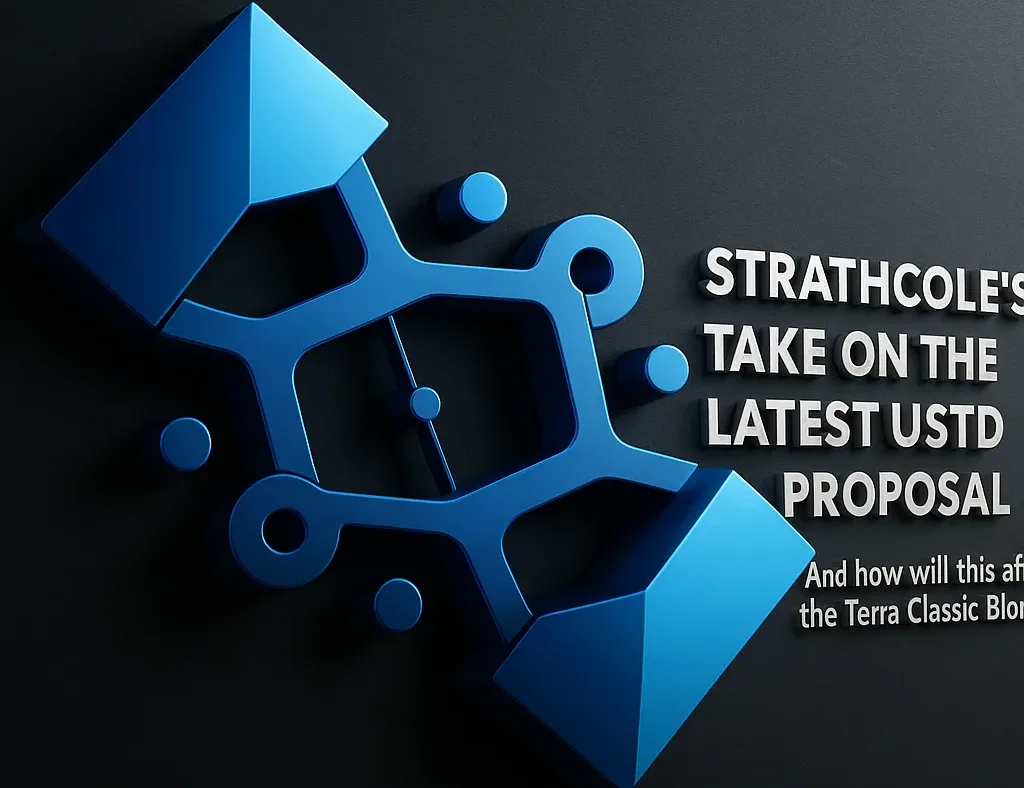Dear #LUNCcommunity, coming to a conclusion on proposal #12192 (@RedlineDrifter USTD) has not been an easy task. The idea of the yield-bearing stable as a native token and protocol on the chain is appealing, the potential income for the chain is promising. But as well as this is a chance, it is a risk. A failure of a protocol launched on-chain has different implications than a failure of a protocol launched by the chain.
With paying for and thus owning a protocol, the chain inherits both the potentials and the risks. If adopted, the potential could be massive in terms of income for the chain and reducing $LUNC / $USTC supply, but major issues and/or failures would fall back on the chain as well. Given the decentralized nature, and that the chain is driven by all its contributors (including projects built on chain) during the past years, this includes potential effects on those projects in case of a negative event.
I think the idea itself seems solid and promising per se. It could be attracting niche users (and while niche sounds like only a few, the “pool” is big). It could bring badly needed income to the chain. Yet after all things considered, all discussions with RedlineDrifter of the past days reflected, I think the chain itself should not fund it from the Community Pool.
Although the project itself is drafted as decentralized as it can be (given the current technology available), it has some inherent semi-centralized components and areas of operation that are not easy to mitigate or “keep under control”. First, the bridging of funds is a concern. The main application would reside on Terra Classic, but most of the collateral would be off-chain (otherwise the yield-fetching would not work).
This means that not all users could withdraw their funds, or, if a lot of liquidity would be kept on chain, the yield would be significantly lower (less percentage in the liquidity pools earning fees). In case of any sort of bridging issues (on either side), the funds could be stuck for a short period of time, which could be a marketing disaster. Second, the semi-centralized components need multisig-wallets to work as at the current state they cannot be controlled by #TerraClassic governance directly (Akash does not support Interchain Accounts).
The past has shown that it can be a lengthy and controversial process to find and approve the necessary people for that (although it also can be quick, see liquidity provision of USDC). These parts of the protocol are fundamental to its inner workings, though. They will need regular attention of the multisig-holders. Third, although the executing company’s legal department judges the protocol “fine” in terms of regulations, we need to keep in mind that a different legal judgement would not only affect the protocol itself, in case that happened.
It would affect the chain itself, too. While the protocol would be decentralized, Circle (CCTP) and Teather are not. Fourth, I am not sure chain governance would be capable of running this kind of business or make the best decisions for the interest of the protocol as there might be several conflicts of priorities or interest. The “reaction speed” is also a concern in this context.
Point five is a question of philosophy. While a chain-owned protocol could benefit the chain directly, it also could compete with third-party protocols and potentially lower the attractiveness for builders, if the chain prefers its own products. This (the chain going for MEV) could go against the free-for-all idea where Terra Classic is just the “infrastructure”.
There are some more, rather minor items that would be too much for this text to add here. Just to repeat, I find the idea and concept appealing, and I would very likely invest in a credible project delivered on Terra Classic implementing just that, but I am hesitant to give a “consent” to the chain itself funding it because of the broader implications.
And to be clear, it would not matter if it would be done on L1 or L2, as soon as the CP/Chain pays for it, it is owned and as such deeply tied to the chain itself. This in turn means it would have implications on all projects building on this chain.
This conclusion has nothing to do with the individuals behind the concept/proposal, nor has it to do with the amount of funds that would be paid from the CP or the concept itself. Contrary, I’d love to see it become a reality as a non-chain-owned L2 project on this chain, maybe through a “governance token” launch, where the funding is paid to the development company, and where the gov token holders gain part of the fees later and govern the protocol as it is intended in the whitepaper (just that it’s chain governance there).
I say that knowing this would have some downsides (no chain-native token, no MM utilization, …) and would lead to less income for the chain than it being chain-owned. Still it could have positive side-effects on user inflow, liquidity and PR even in this case.
Cheers.

